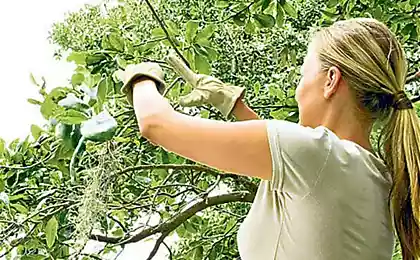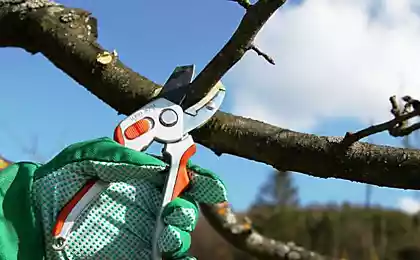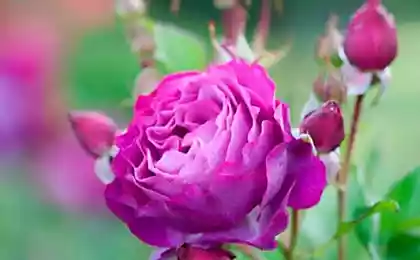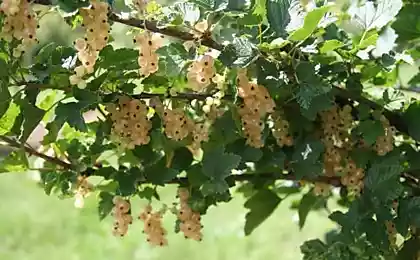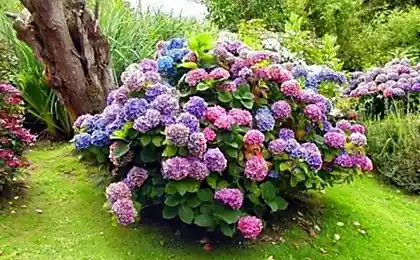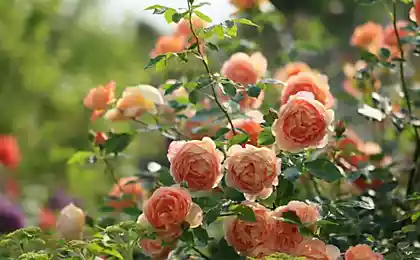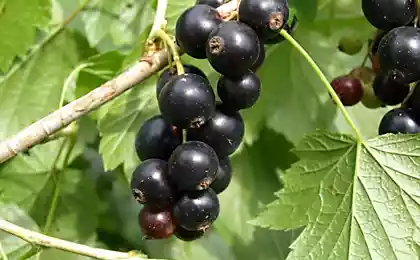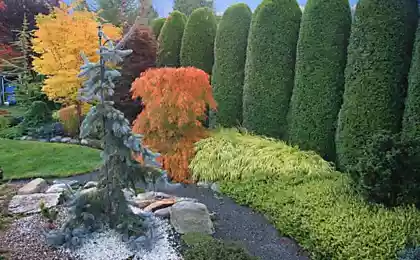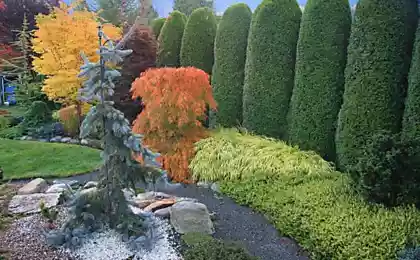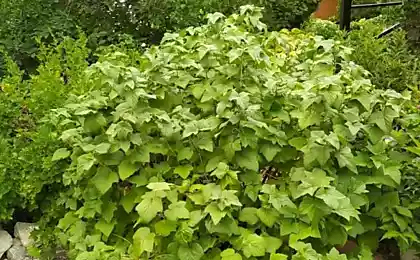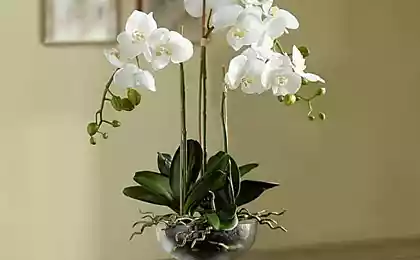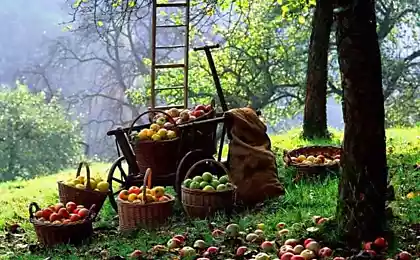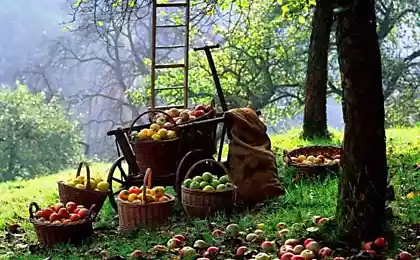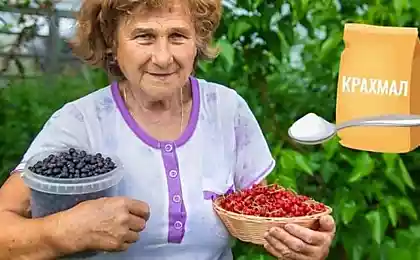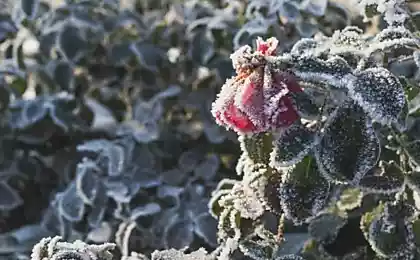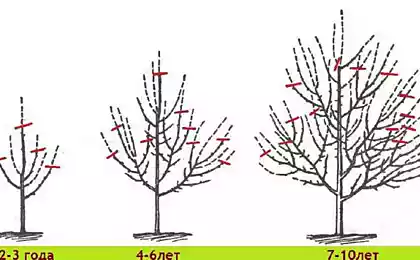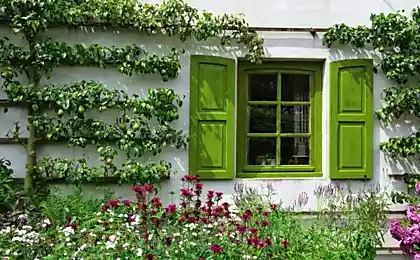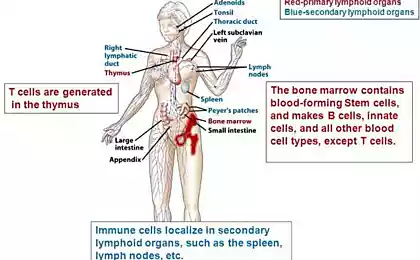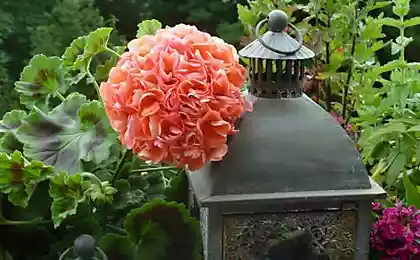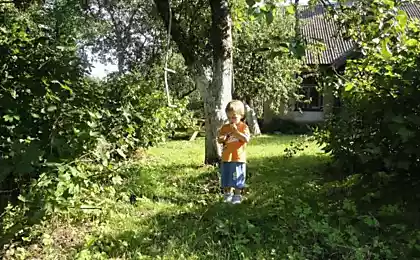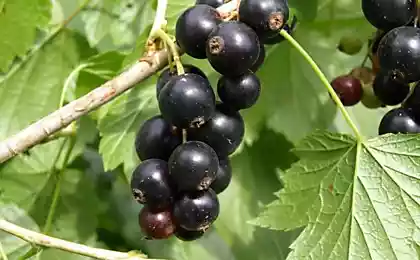473
How to crop currants
For high regular and higher-quality harvest is an important event pruning currant. It is aimed at creating and maintaining in the Bush the largest number of fruit-bearing wood, thus ensuring good annual growth. When pruning, you should consider the durability and productivity of PABSEC and the main skeletal branches.
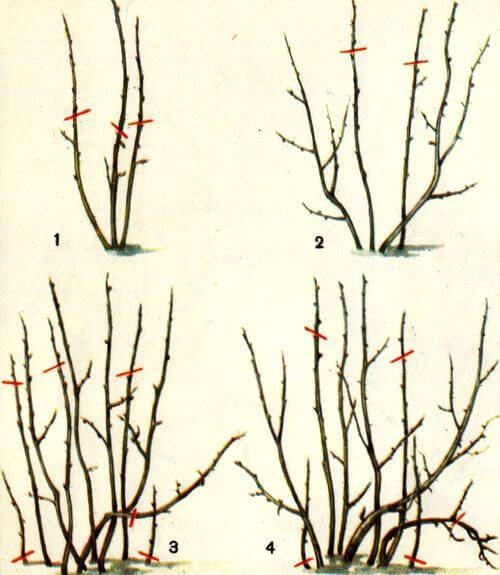
The formation of the Bush of black currant
1-the first year after planting, 2-second year 3-third year 4-fourth year
The most valuable and abundant harvest are stronger growth ( 25 to 40 cm) of the 1st and 2nd order of branching. There are 2 stage trim.
The first step is the pruning of planted seedlings currant with a view to the formation of a Bush.
Because of this there is rapid formation of a Bush by growing basal shoots. In this year, leaving 3-4 strong basal escape, located in the Bush, to avoid shading. The following year, they become basal branches. Other, weaker, interwoven, inconveniently located shoots cut to the ground.
Thus, for 4-5 years, black currant and 6-8 red you can generate a hive consisting of 12-15-20 branches of different ages: from zero shoots of substitution raised in this year old branches to limit productive age (5-8 years) which have to be deleted, as their growth in length by this time reduced.
Formed in the Bush should be the same number of branches of each age. Better to annuals 1-2 was greater and the age limit to 1-2 less.
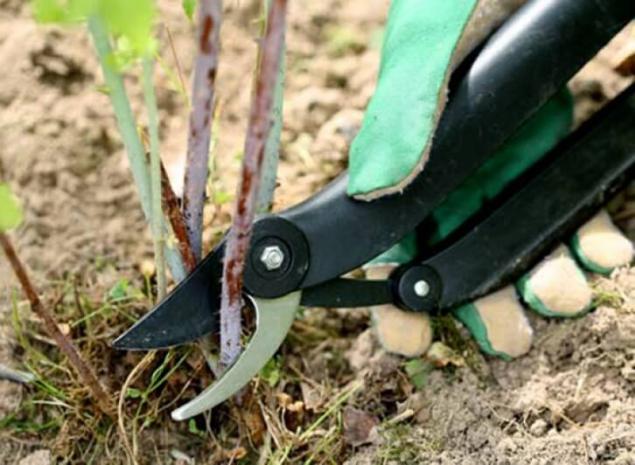
The second stage is support trimming aimed at maintaining quantitative and age relationship of the branches in the Bush.
This can be achieved by removing old branches (red 6-8 year old) or branches with shorter annual gains. To replace the cut branches leave the same number of basal shoots. If they produced little, apart from old branches, and remove 1-2 more younger.
Support cropping (annual tenderloin aging, unproductive branches and replace them with new, generated from shoots of renewal) continues throughout the life of the Bush. Sometimes with left over old branches should be cut off the top part with short increments to the nearest strong lateral branching.
Such pruning on perennial wood increases the size of the berries in the remaining part of the branch. During this period, also cut branches are shaded, the sick, the broken, intertwined and lying on the ground. Branches should be placed evenly, for the air to flow freely.
Simple and practical pruning method proposed by the Institute of horticulture to them. I. V. Michurina — cut branches of the black currant, an increase of less than 15 cm, and the excess of annual shoots.
Cut currants in the fall or early spring, before Bud break. You can carry out the summer pruning of black currants immediately after harvest. To minimize hand labor in pruning currants, especially with close placement of plants, used the new technology of cultivation, in which during the first 5-6 years after planting, the bushes do not form. During this time, get 2-3 crops. Then instead of cutting separate old (with a very weak growth or no) branches carry out pruning to the ground level once in 5-6 years. After harvest, you can do this mowing using a number. Branches removed and burned.
After pruning make mineral and organic fertilizers, applying herbicides. The following year, grows lots of shoots, of them leave from 16 to 20 the best, the others break down before their lignification does. Early fruiting varieties comes a year after mowing. After harvest 2-3 crops bushes uprooted. In the Institute of horticulture to them. I. V. Michurin for the 6-year period from the plantation, which is rejuvenated with a given frequency, the yield on 30-40% above, than in control.
All of the accommodation options and the ways to clip mandatory pruning the first spring after planting, leaving 2-4 buds.
To increase the laying of flower buds on shoots a year old you can hold these pinched shoots. For all kinds of trimming the cut branches are necessarily removed from the plantation and burned, as they can be a source of diseases and pests.
Watch the video: "Pruning black currant"published
P. S. And remember, only by changing their consumption - together we change the world! ©
Join us in Facebook , Vkontakte, Odnoklassniki
Source: datchnik.ru/index.php/smorodina/30-obrezka-smorodiny

The formation of the Bush of black currant
1-the first year after planting, 2-second year 3-third year 4-fourth year
The most valuable and abundant harvest are stronger growth ( 25 to 40 cm) of the 1st and 2nd order of branching. There are 2 stage trim.
The first step is the pruning of planted seedlings currant with a view to the formation of a Bush.
Because of this there is rapid formation of a Bush by growing basal shoots. In this year, leaving 3-4 strong basal escape, located in the Bush, to avoid shading. The following year, they become basal branches. Other, weaker, interwoven, inconveniently located shoots cut to the ground.
Thus, for 4-5 years, black currant and 6-8 red you can generate a hive consisting of 12-15-20 branches of different ages: from zero shoots of substitution raised in this year old branches to limit productive age (5-8 years) which have to be deleted, as their growth in length by this time reduced.
Formed in the Bush should be the same number of branches of each age. Better to annuals 1-2 was greater and the age limit to 1-2 less.

The second stage is support trimming aimed at maintaining quantitative and age relationship of the branches in the Bush.
This can be achieved by removing old branches (red 6-8 year old) or branches with shorter annual gains. To replace the cut branches leave the same number of basal shoots. If they produced little, apart from old branches, and remove 1-2 more younger.
Support cropping (annual tenderloin aging, unproductive branches and replace them with new, generated from shoots of renewal) continues throughout the life of the Bush. Sometimes with left over old branches should be cut off the top part with short increments to the nearest strong lateral branching.
Such pruning on perennial wood increases the size of the berries in the remaining part of the branch. During this period, also cut branches are shaded, the sick, the broken, intertwined and lying on the ground. Branches should be placed evenly, for the air to flow freely.
Simple and practical pruning method proposed by the Institute of horticulture to them. I. V. Michurina — cut branches of the black currant, an increase of less than 15 cm, and the excess of annual shoots.
Cut currants in the fall or early spring, before Bud break. You can carry out the summer pruning of black currants immediately after harvest. To minimize hand labor in pruning currants, especially with close placement of plants, used the new technology of cultivation, in which during the first 5-6 years after planting, the bushes do not form. During this time, get 2-3 crops. Then instead of cutting separate old (with a very weak growth or no) branches carry out pruning to the ground level once in 5-6 years. After harvest, you can do this mowing using a number. Branches removed and burned.
After pruning make mineral and organic fertilizers, applying herbicides. The following year, grows lots of shoots, of them leave from 16 to 20 the best, the others break down before their lignification does. Early fruiting varieties comes a year after mowing. After harvest 2-3 crops bushes uprooted. In the Institute of horticulture to them. I. V. Michurin for the 6-year period from the plantation, which is rejuvenated with a given frequency, the yield on 30-40% above, than in control.
All of the accommodation options and the ways to clip mandatory pruning the first spring after planting, leaving 2-4 buds.
To increase the laying of flower buds on shoots a year old you can hold these pinched shoots. For all kinds of trimming the cut branches are necessarily removed from the plantation and burned, as they can be a source of diseases and pests.
Watch the video: "Pruning black currant"published
P. S. And remember, only by changing their consumption - together we change the world! ©
Join us in Facebook , Vkontakte, Odnoklassniki
Source: datchnik.ru/index.php/smorodina/30-obrezka-smorodiny
